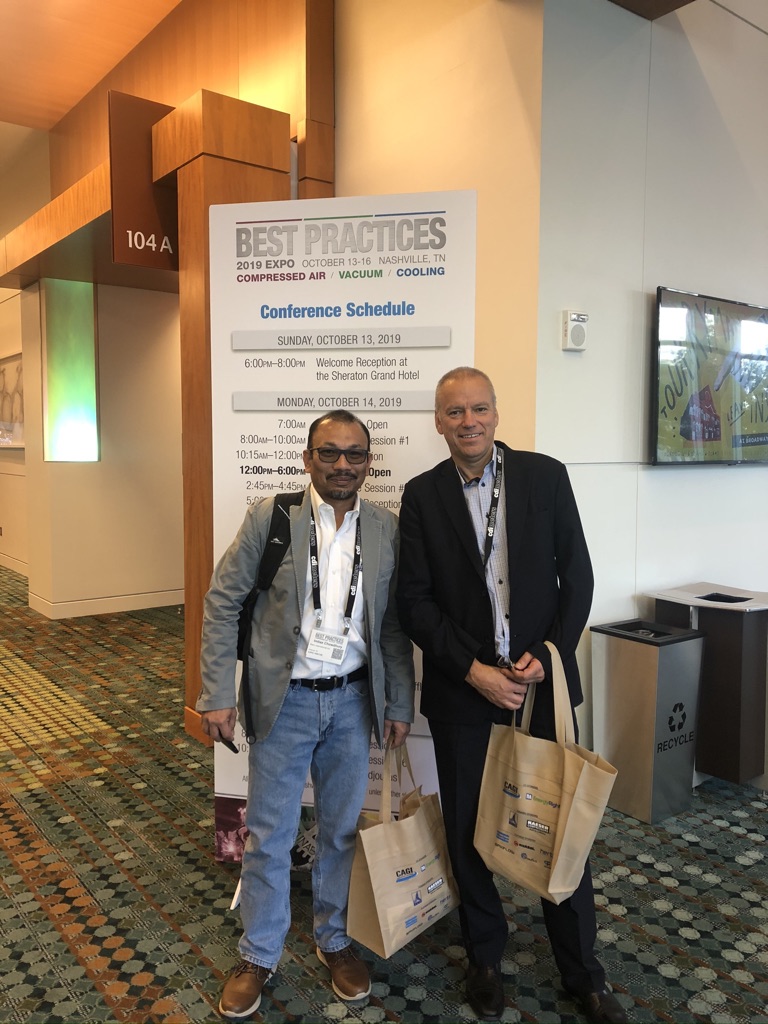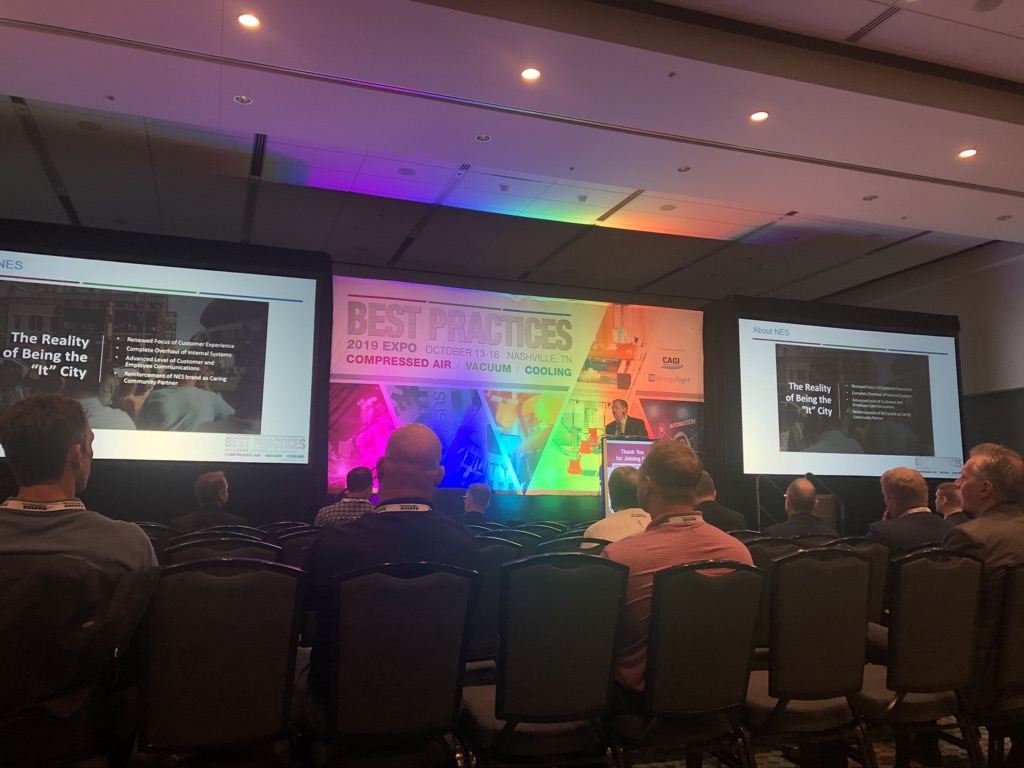Great event organised by Rod Smith and his Compressed Air Best Practice team ! A very divers program with a focussed Expo, good lectures and speakers.

Remarkable how much focus is on Sustainability. Almost all presentations, from local Municipal speakers, to local company responsibles, all was focussed on how to reduce the CO2 footprint.
Great focus we find back across the world. Different regions across the world are more advanced.
In the Industry, 10-12% of the electricity consumed is for Compressed Air. The presentations during the courses, showed a lot of potential savings by introducing new controls, frequency converters,....
What is still missing for real Sustainability is the total life cycle, taking into account, the energy required to produce the machine, the waste it produces during its lifetime and the lifetime of the compressor itself.
Unfortunately, more and more we observe that the industrial compressors lifetime is reducing due to cost reductions in function of price decrease. As a result more waste is being produced. This results in additional pollution for the uses and additional maintenance costs.
In the equation of Sustainabiliy the WASTE should always be included !
Waste in Compressed Air installations occurs is different ways :
- Uncontrolled Oil-carry over : Oil-flooded compressors always exhaust 2-10ppm of Oil in the air. The oil cannot be captured and comes free in the workspace. The workspace or environment becomes polluted and is harming mother nature, but also the air workers are breathing in the vicinity is poluted. Air quality in cities is the topic for banning Diesel cars. In the workspace, use of contaminated compressed air should also be banned. It is proven that small amounts of chemicals in the body will lead to longterm illness. No studies have been performed on the outcome of contaminated compressed air released in the workspace influencing workers health.
- filters cartridges (Oil filters, fine filters, carbon filters, Air intake filters,...) is a constant flow of waste produced.
- break downs of compressors, leading to the disposal of mechanical or electrical or electronical components
- end of life time of wearing parts : some parts need to be replaced on regular time spans
- end of life itme of complete air -compressors : the total waste produced should always be considered longer than 10yrs.

